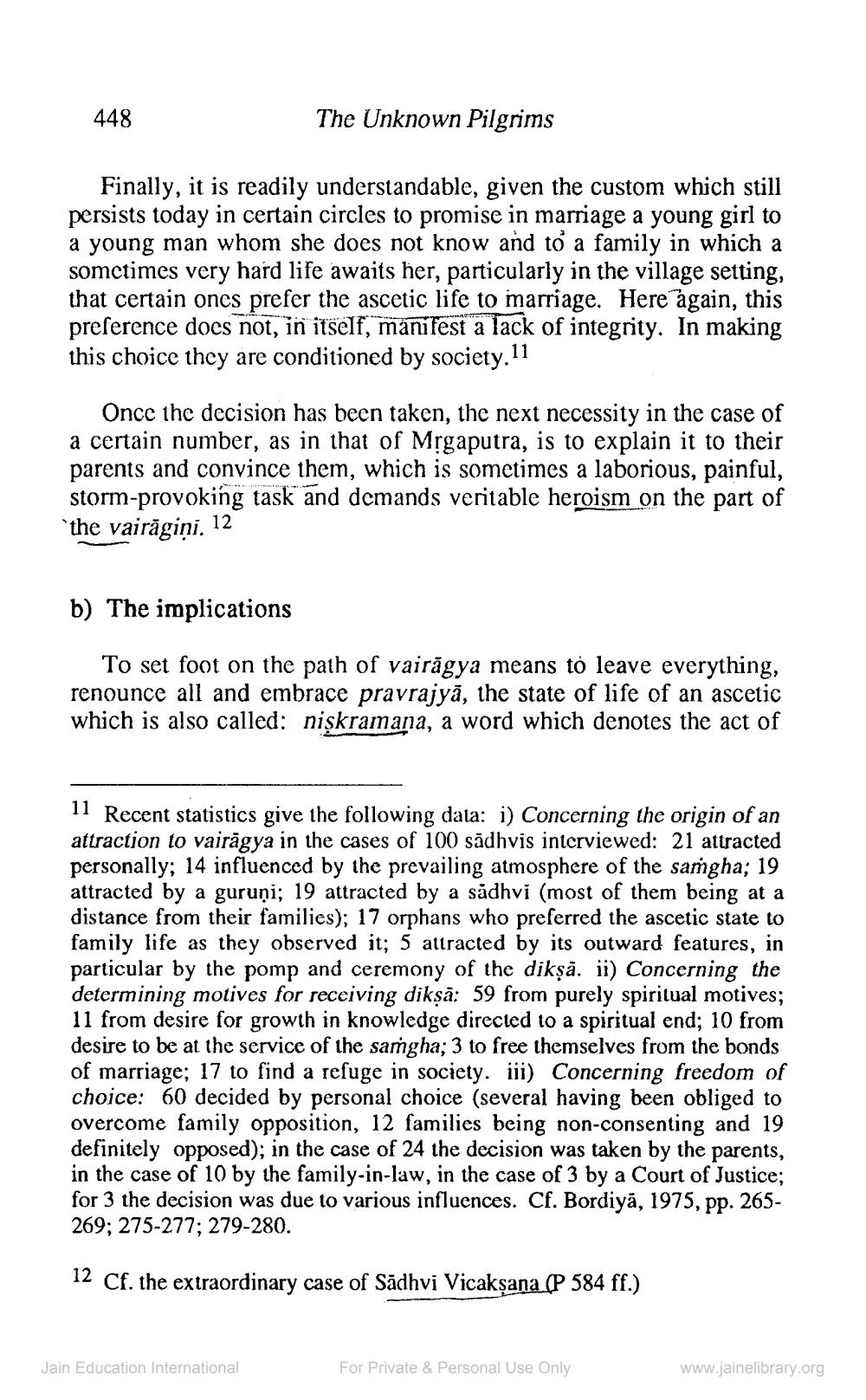________________
The Unknown Pilgrims
Finally, it is readily understandable, given the custom which still persists today in certain circles to promise in marriage a young girl to a young man whom she does not know and to a family in which a sometimes very hard life awaits her, particularly in the village setting, that certain ones prefer the ascetic life to marriage. Here again, this preference does not, in itself, manifest a lack of integrity. In making this choice they are conditioned by society.11
448
Once the decision has been taken, the next necessity in the case of a certain number, as in that of Mrgaputra, is to explain it to their parents and convince them, which is sometimes a laborious, painful, storm-provoking task and demands veritable heroism on the part of `the vairāgini.
12
b) The implications
To set foot on the path of vairagya means to leave everything, renounce all and embrace pravrajya, the state of life of an ascetic which is also called: nişkramana, a word which denotes the act of
11 Recent statistics give the following data: i) Concerning the origin of an attraction to vairagya in the cases of 100 sadhvis interviewed: 21 attracted personally; 14 influenced by the prevailing atmosphere of the samgha; 19 attracted by a guruņi; 19 attracted by a sadhvi (most of them being at a distance from their families); 17 orphans who preferred the ascetic state to family life as they observed it; 5 attracted by its outward features, in particular by the pomp and ceremony of the dikṣā. ii) Concerning the determining motives for receiving dikṣā: 59 from purely spiritual motives; 11 from desire for growth in knowledge directed to a spiritual end; 10 from desire to be at the service of the samgha; 3 to free themselves from the bonds of marriage; 17 to find a refuge in society. iii) Concerning freedom of choice: 60 decided by personal choice (several having been obliged to overcome family opposition, 12 families being non-consenting and 19 definitely opposed); in the case of 24 the decision was taken by the parents, in the case of 10 by the family-in-law, in the case of 3 by a Court of Justice; for 3 the decision was due to various influences. Cf. Bordiya, 1975, pp. 265269; 275-277; 279-280.
12 Cf. the extraordinary case of Sadhvi Vicaksana (P 584 ff.)
Jain Education International
For Private & Personal Use Only
www.jainelibrary.org




